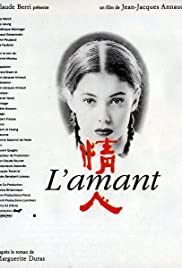
The description of Hélène Lagonelle, the only other white person living at the boarding school where Duras is herself, is very intimate and erotic. Which gives us a feeling of the forbidden love, even more so than the age difference. The race plays a difference in the descriptions too, “he was not white” and “the little white girl” being brought up several times. When she first describes the Chinese man he’s stylish, rich, elegant, dressed in modern European clothing, making him appear as the perfect prince charming driving a black Limousine. There is almost this fascination with the change and with the grotesque, in the way she describes herself.

Duras spends the beginning of the book describing her physical appearance, as young and as old. As a young adult, her face was already old, creating a sort of paradoxical image and an expectation of something having happened in her late teens to have made her age prematurely. One of the interesting things about the book is the way it opens with her telling how she was already old at 17 or 18 years old. The young girl might be Duras, making the book autobiographic. The younger brother is weak, sweet but sadly dies. The brother is cruel, he steals, he intimidates, and the mother lets him. The girl, however, didn’t realise until much later that she did indeed love him.ĭespite the importance of the girl and the lover, the manic-depressive mother doting on her oldest son is a big part of the story. In the end he breaks it off after pressure from his father, but he was always sincere about his emotions. Society, of course, does not at the time support relations between Europeans and Asians. He is supposed to marry a steady Chinese girl. Their race and age gap prevents them to be together.

He is an older Chinese man, and he’s rich. She is a white French girl, but she is poor. This is a story about class, poverty and race. The Chinese man strikes up a conversation with her and then offers her a lift in his car so she doesn’t have to take the crowded bus on her own.

She is leaving her family after a holiday, going back to her boarding school in Saigon. The two brothers and the mothers are in the focus for a lot of the story.Ī 15 year old French girl in French Indochina meets a Chinese man on a ferry across the Mekong river. However, as you read the book you realise that it’s equally much about her relations with her family. Marguerite had an affair with a rich merchant and she has treated that part of her life in several of her works, but L’Amant is the one that directly touches upon it. Her father died early on, but the mother remained a school teacher in Vietnam. Her writing has taken inspiration from her childhood in Vietnam, where her French parents moved to work. Marguerite Donnadieu, better known as Duras, (4 April 1914 – 3 March 1996) is a French writer who grew up in French Indochina (Vietnam).


 0 kommentar(er)
0 kommentar(er)
